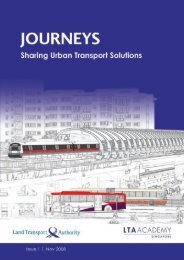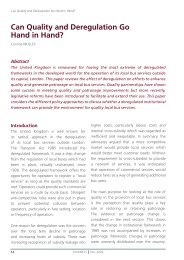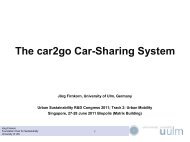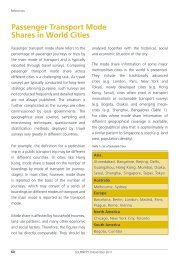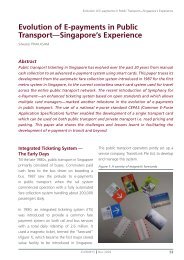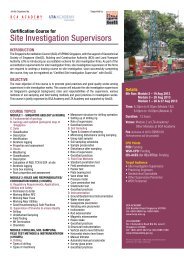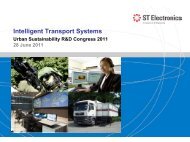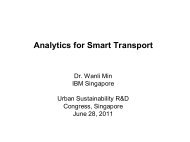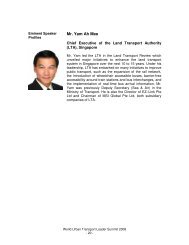Full Version - Issue 7 | November 2011 - LTA Academy
Full Version - Issue 7 | November 2011 - LTA Academy
Full Version - Issue 7 | November 2011 - LTA Academy
You also want an ePaper? Increase the reach of your titles
YUMPU automatically turns print PDFs into web optimized ePapers that Google loves.
Different Approaches to Public<br />
Transport Provision<br />
David A. HENSHER and Gabriel WONG<br />
Abstract<br />
Public transport is an essential service, and ensuring its effective and efficient provision<br />
is a priority of many governments. Different cities have adopted different approaches to<br />
public transport provision, each with its merits and shortcomings. This article provides<br />
a brief overview of the main approaches – government operation, competition in<br />
the market, government regulation of fares and services, competitive tendering, and<br />
negotiated performance-based contracts – with some real-world examples. There<br />
is no one-size-fits-all model, and cities have to decide the appropriate approaches<br />
for themselves based on their contexts and priorities. Singapore adopts an approach<br />
where the government regulates public transport fares and services provided by private<br />
operators. This has worked reasonably well, with some room for improvement.<br />
Introduction<br />
Travelling is part and parcel of modern urban<br />
living – people travel for work, education,<br />
recreation and many other reasons. For<br />
those who do not own motor vehicles,<br />
public transport could be their main means<br />
of travel. Because of its economic and social<br />
importance, public transport is considered<br />
an essential service in most cities, much like<br />
electricity, water and telecommunications.<br />
Hence ensuring effective and efficient<br />
provision of public transport services is a<br />
priority of most governments.<br />
Different cities have adopted different<br />
approaches to public transport provision, each<br />
with their own pros and cons. The history of<br />
public transport in many cities shows how<br />
views on the appropriate method of provision<br />
have evolved over time. This article aims to<br />
provide a brief survey of different approaches<br />
of public transport provision and Singapore’s<br />
approach. A global perspective is provided<br />
in the many papers from the International<br />
Conference Series on Competition and<br />
Ownership of Land Passenger Transport<br />
(the “Thredbo Series” http://www.thredboconference-series.org/papers/).<br />
Historical Trends in Public<br />
Transport Provision<br />
There was a wave of nationalisation in the 1940s<br />
to 1970s followed by privatisation from the late<br />
1970s in many countries. At the core of the<br />
nationalisation and privatisation waves were<br />
those industries providing essential services,<br />
such as public transport, telecommunications,<br />
electricity and gas.<br />
In the first half of the 20th century, urban public<br />
transport services in the UK and the US were<br />
mainly provided by private enterprises.<br />
JOURNEYS | <strong>November</strong> <strong>2011</strong><br />
Different Approaches to Public Transport Provision<br />
31



